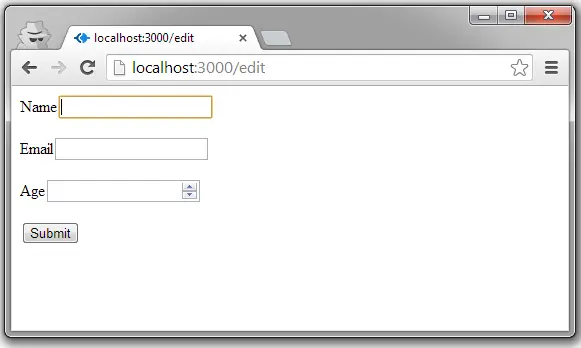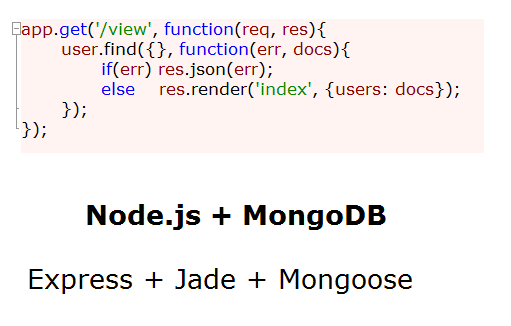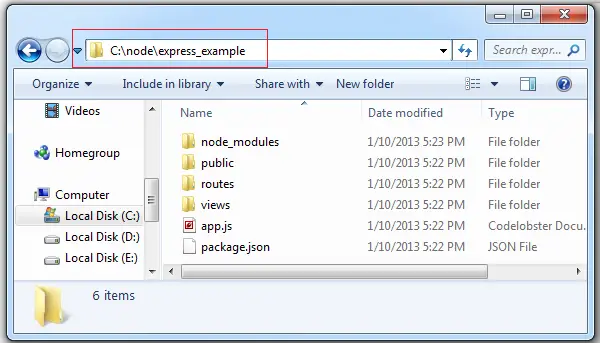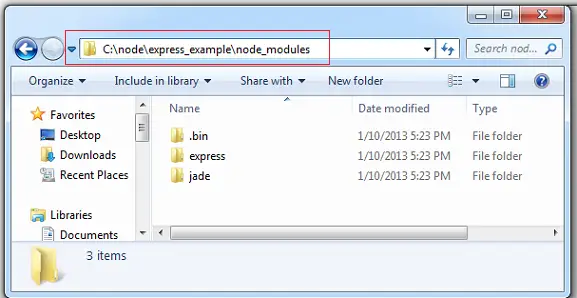Lets learn some of the basics of Jade Template Engine. Jade is the default template engine for Express Web Framework of Node.js Also note that, Jade and Express are open source product of the same company, so go very well with each other!

Using template engine might seem pointless in the beginning, but if you’re building a large-scale application, it’s a handy tool and you’ll feel good about your decision to use one for your project.
Make sure you’ve installed Express Web framework and Jade module locally for your application. You can find the procedure at Express Web Framework: Node.js
Configuration Section
app.js
1
| app.set('view engine', 'jade'); |
app.set('view engine', 'jade');
This would let your application know that you’ll be using Jade as Template Engine. This way, you need not mention the Template Engines file extension each time.
Jade File: Indentation
index.jade
1
2
3
4
| html
head
title Technotip
body |
html head title Technotip body
Would output
1
2
3
4
5
| <html>
<head><title>Technotip</title></head>
<body>
</body>
</html> |
<html> <head><title>Technotip</title></head> <body> </body>
</html>
Indentations in Jade decide which element(s) is/are a child off which element.
Jade File: Variable
index.jade
1
2
| - var name = "Love For Design"
p= name |
- var name = "Love For Design" p= name
and
Jade File: String. Minus sign significance
index.jade
1
2
| - var name = "Love For Design"
p #{name} |
- var name = "Love For Design" p #{name}
Out put Love For Design on the browser, inside a paragraph tag.
Jade File: Code Interpretation – REPL
index.jade
This outputs 6 on to the browser inside a paragraph tag.
Jade File: String Length Management
index.jade
1
2
3
4
5
6
7
| p
| My Name is Satish
| I Love web development
| I love helping people
| by teaching them whatever I know
| I believe, this is a good cause of
| spreading knowledge. |
p | My Name is Satish | I Love web development | I love helping people | by teaching them whatever I know | I believe, this is a good cause of | spreading knowledge.
This would treat the entire string as a single line text, and out put looks like:
My Name is Satish I Love web development I love helping people by teaching them whatever I know I believe, this is a good cause of spreading knowledge.
Jade File: Id’s and Classes
index.jade
1
2
| div#wrapper
p.highlight I Love Node.js |
div#wrapper p.highlight I Love Node.js
This would apply the id wrapper to div and highlight class to p tag.
Jade File: Multiple id and class
index.jade
1
2
| div#wrapper.content.highlight
p I Love Node.js |
div#wrapper.content.highlight p I Love Node.js
We could even assign multiple id’s and classes to a html element.
Jade File: Anchor Tag
index.jade
1
| a(href="/about", rel="nofollow") Satish |
a(href="/about", rel="nofollow") Satish
This would wrap the word Satish with anchor tag and nofollow attribute.
Jade File: Anchor Tag and Image Tag
index.jade
1
2
| a(href="/about", rel="nofollow") Satish
img(src="1.gif", alt="Child Eating KitKat") |
a(href="/about", rel="nofollow") Satish
img(src="1.gif", alt="Child Eating KitKat")
This would output Satish with anchor tag and nofollow attribute. Also an image with alt attribute attached to it. Both these tags are siblings.
Jade File: Hyperlink the Image file – Hypermedia
index.jade
1
2
| a(href="/about", rel="nofollow")
img(src="1.gif", alt="Child Eating KitKat") |
a(href="/about", rel="nofollow") img(src="1.gif", alt="Child Eating KitKat")
Indent img tag inside anchor tag and the image gets linked to by the anchor tag.
Jade File: Writing Function inside Jade file
index.jade
1
2
| - var fn = function() { return "android KitKat"}
p #{fn()} |
- var fn = function() { return "android KitKat"}
p #{fn()}
This outputs android KitKat to the browser.
Jade File: Accessing elements of Object
index.jade
1
2
3
4
| - obj = { name: "Apple", product: "iPhone"}
ul
li #{obj.name}
li #{obj.product} |
- obj = { name: "Apple", product: "iPhone"}
ul li #{obj.name} li #{obj.product}
This would output
Jade File: Accessing elements of an array
index.jade
1
2
3
4
| - obj = [ "Nexus 5", "iPhone 5S"]
ul
li #{obj[0]}
li #{obj[1]} |
- obj = [ "Nexus 5", "iPhone 5S"]
ul li #{obj[0]} li #{obj[1]}
This would output
Jade File: Including another jade file
index.jade
This would include the contents of show.jade file inside index.jade file.
Basics of Jade – Template Engine: Node.js
[youtube https://www.youtube.com/watch?v=xNoWTLsZbaU]
Note:
– sign tells jade that the code that follows should be executed.
= sign tells that the code should be evaluated, escaped and then output.
Stay subscribed: In next video we’ll show how to use bootstrap + Express + Jade + Node.js
Building a web form. Loops and Conditional statements present in Jade.





